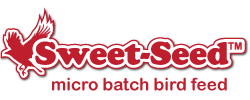Why Can't I Get Hummingbirds to Visit My Backyard?

Hummingbirds are some of the most sought after backyard birds, and it is easier to attract these flying jewels than many backyard birders realize. The key is to meet their survival needs for food, water, shelter and nesting sites, and once they recognize your yard as a hummingbird-friendly sanctuary, you'll have more of these tiny birds buzzing around than you can believe possible.
Attracting Hummingbirds With Food
The easiest way to get hummingbirds to visit your yard is to make sure there is suitable food available. Planting nectar-rich flowers is a great option, and blooms such as zinnia, salvia and bee balm are easy hummingbird magnets. Blooms in bright reds and pinks will catch hummingbirds' attention the quickest, but these birds will visit suitable flowers of any color. For the best results, use a variety of blooms with different seasonal bloom times so there is always natural nectar available in your yard.
Adding hummingbird feeders to the yard is ideal for supplemental food and because hummingbirds are accustomed to feeders, they will visit very quickly. Choose a feeder with red or pink on it for more color the birds will notice, and keep the feeder clean and filled with fresh nectar. Most importantly, place the feeder in an open, visible spot where birds will notice it as they fly by. If the feeder is hidden under an awning, for example, it may take much longer for hummingbirds to find it.
[random_content group_id="51" num_posts="1"]
Attracting Hummingbirds With Water
While hummingbirds take in most of their water from the nectar they sip, they still need a suitable water source for bathing and preening. If your yard has that water source, the birds will not only visit, but they will stay around longer as they care for their feathers.
Noisy, moving water is best to attract hummingbirds. A shallow, bubbling fountain with a thin lip the birds can cling to is ideal, and they will happily splash in the water as they bathe. Another option is a mister or dripper that is positioned to spray on broad leaves nearby, which will collect water that hummingbirds can rub against for a quick bath. If the fountain or sprayer has a bit of red on it, it will attract hummingbirds even more quickly.
Attracting Hummingbirds With Shelter
These tiny birds like dense, thick shrubbery for roosting. Any shrubs, vines or trees will do, but choosing varieties that also have nectar-producing flowers will help the landscaping do double duty to be even more hummingbird-friendly. Thorny plants offer another layer of protection to keep hummingbirds safe from predators, but be sure you choose native varieties that will not take over the yard and crowd out other useful plants.
Design hummingbird-friendly landscaping to include layers of shrubbery, and it will be even better as shelter, especially during storms. Be sure there are suitable perches available, however, since hummingbirds love to sit and observe their territory and keep a wary eye out for predators or intruders. Avoid pruning plants too often, which can cause crowded foliage that will not be as good for perching hummingbirds.
Attracting Hummingbirds With Nesting Sites
Hummingbirds use the same shrubs, vines and trees they like for shelter as nesting sites, but there are several steps you can take to encourage hummingbirds to nest nearby. Spider silk is a key component of hummingbird nests – the webs are wrapped around the nest and give it a stretchy quality that flexes as the baby birds grow – so leaving webs intact around the yard will provide the best possible nesting material for hummingbirds. Hummingbirds will also take bits of soft cotton and plant down as nesting material, and wild bird stores often have hanging baskets of suitable material that can be put up in the spring for birds to use.
Once hummingbirds begin to nest, they can be very wary and it is important to give them plenty of space. If a hummingbird keeps disappearing in the same bush or shrub, it is likely there is a nest nearby. Avoid gardening work or mowing the lawn near the nesting site to give the bird a chance to settle in and feel safe, and keep pets and children at a respectful distance.
It may take some effort to attract your first hummingbirds, but once they realize how hummer-friendly your yard is, they can be very loyal and will return every year to the safe, reliable space you've provided.
